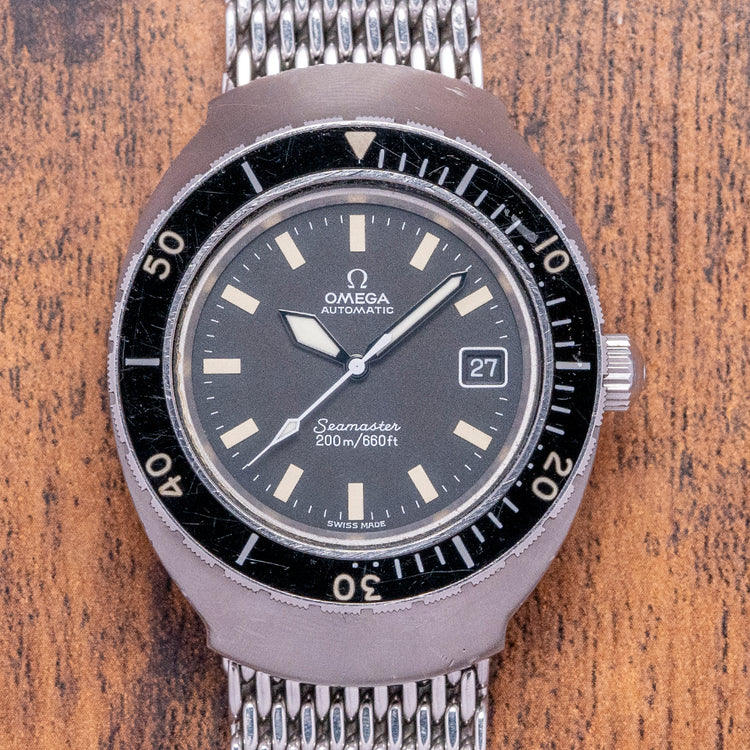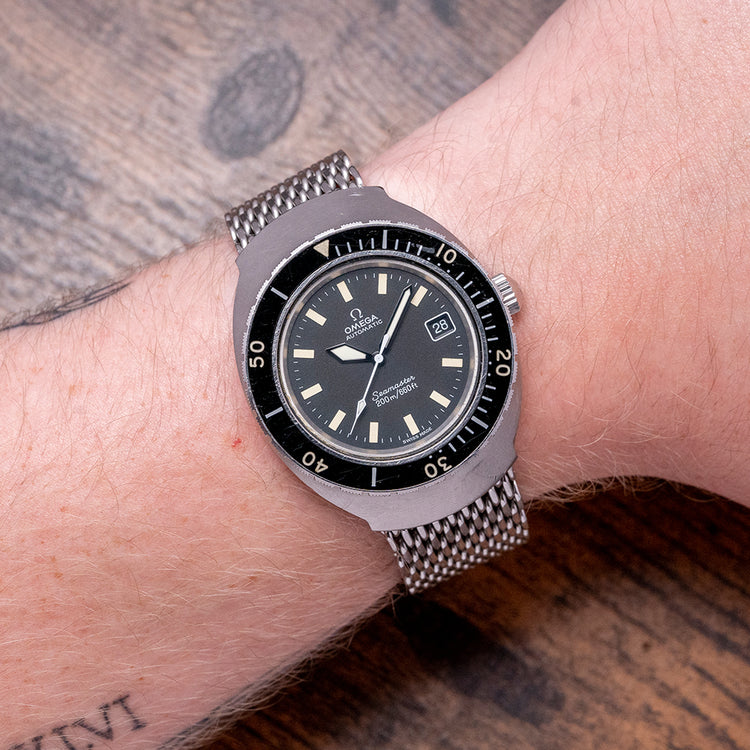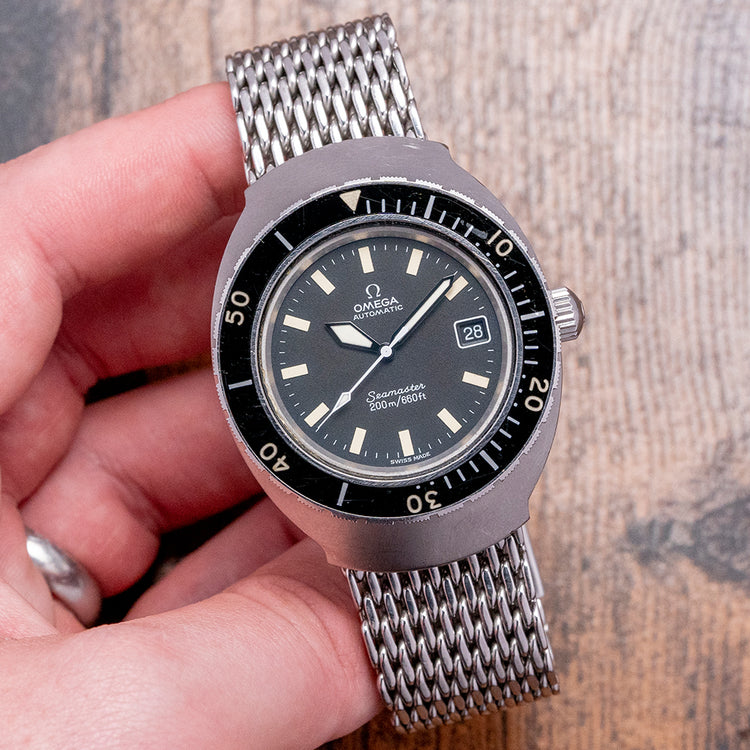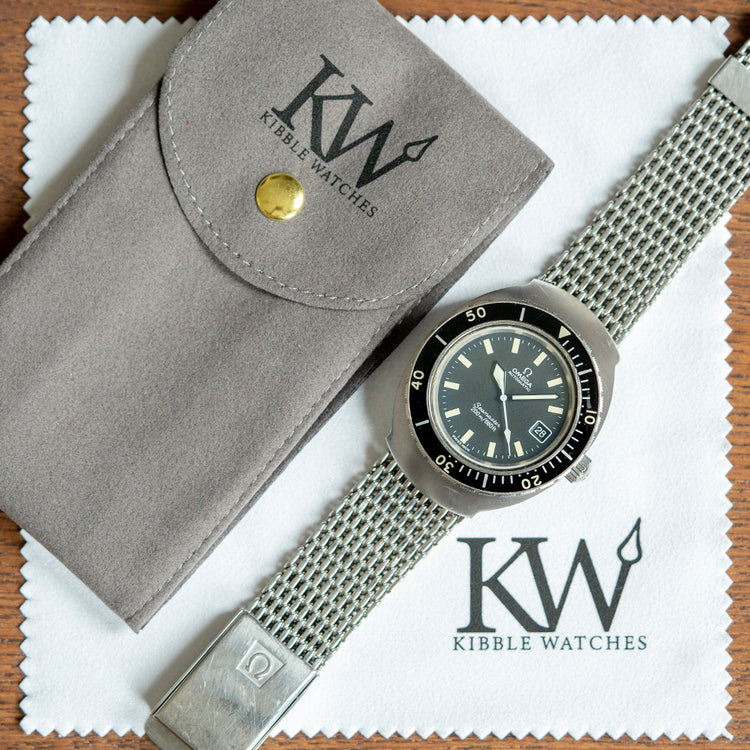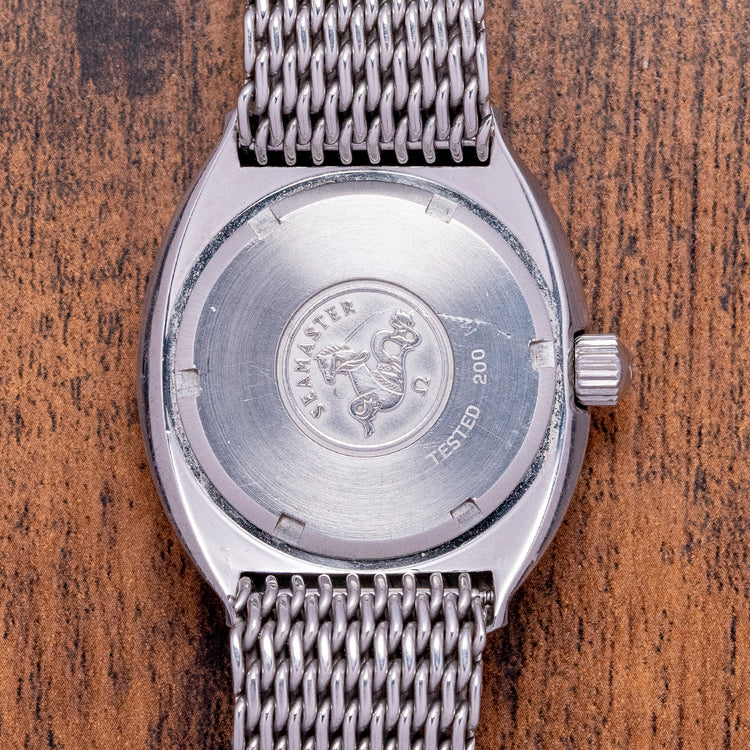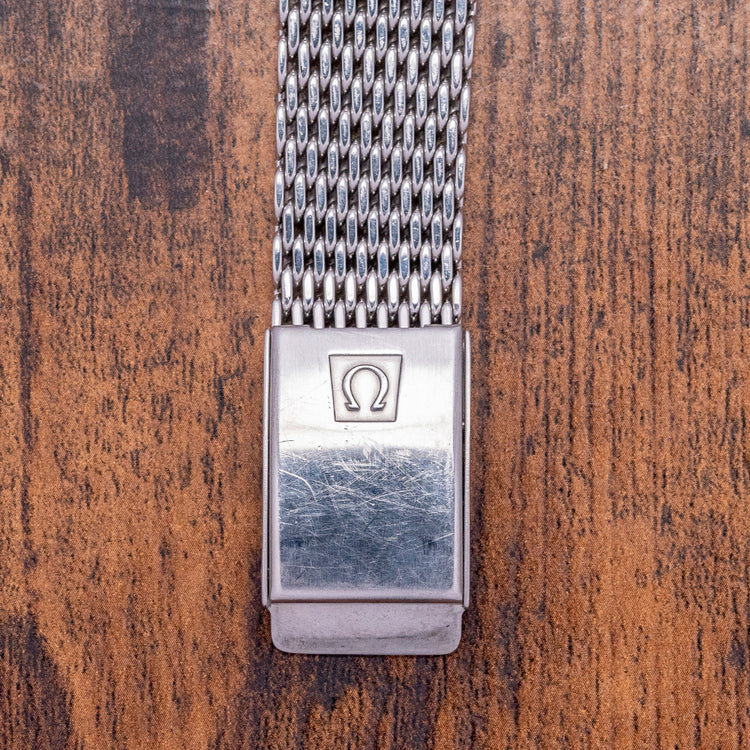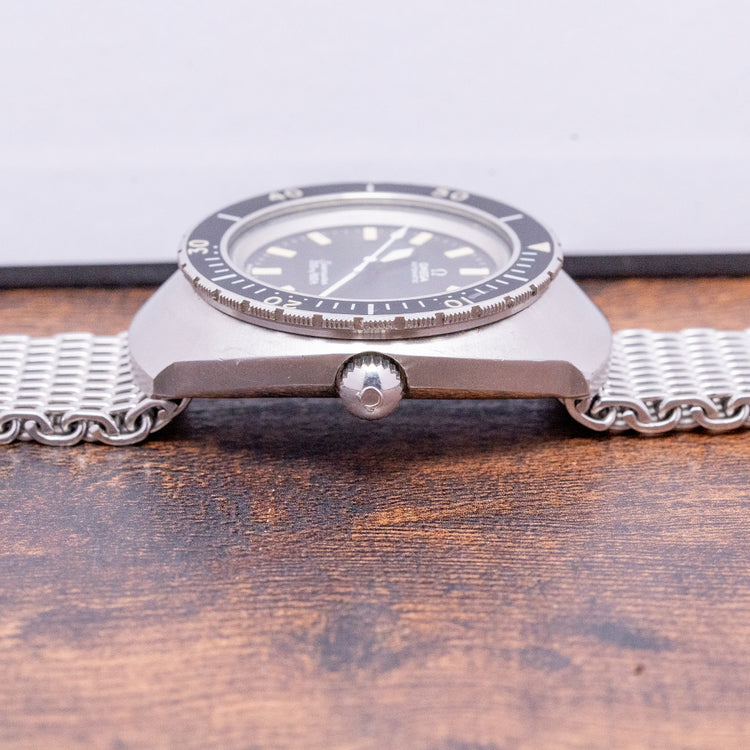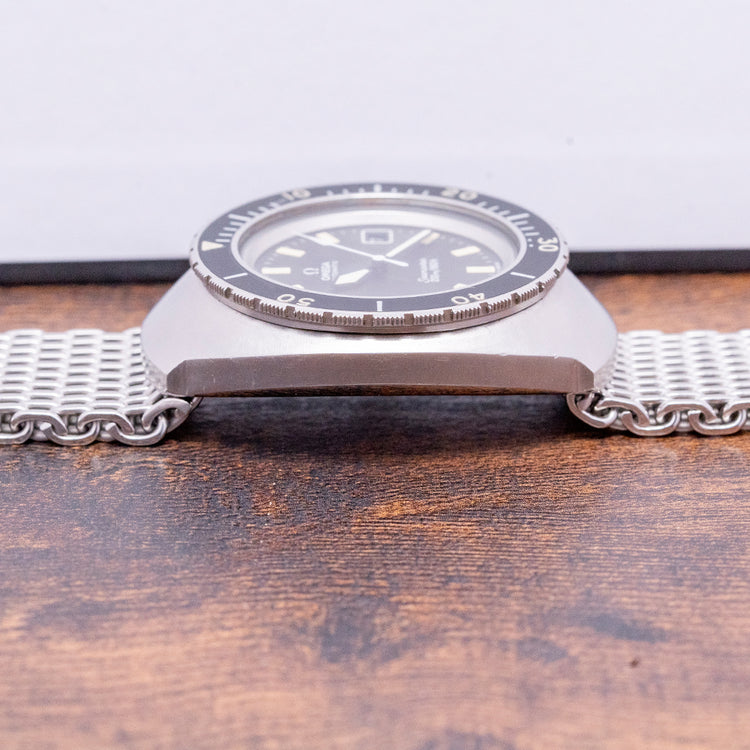More Information
Description
More
Less
Here we have a curvaceous 1969 Omega Seamaster 200m Flightmaster Automatic 166.091, introduced in 1969 and designed by Frédéric Robert, its design was created to appeal to adventurous aviators. With a barrel-shaped 40.5mm stainless steel oversized case, its distinctive curved profile has prominently covered lugs that sit on your wrist like a cushion for perfect wrist ergonomics, and a lug-to-lug length of 51.5mm and a case thickness of 11mm give the watch an impressive wrist presence. On the right side is a recessed signed screw-down crown with deep knurling for grip. The rotating steel bezel has stepped knurling for grip, and an original black Bakelite dive 60-minute insert, a flat crystal sits above a service replaced dial, an outer minute track has lume coated baton and inverted triangle indexes marking the hours at 3 o’clock, a colour-matched framed date window, sporting service replaced Plongeur hands filled with lume complemented by an arrow pointed second hand, At 12 o’clock we have the Omega motif “Automatic” and at 6 o’clock “Seamaster 200m/660ft” completes this sports dive watch. On the reverse, we have a screw-down case back with an engraved Hippocampus in its centre, a seahorse that represents Neptune, the God of the sea; it was conceived by Pierre Borie after seeing a picture of Neptune riding a chariot pulled by seahorses; it is the reason why the seahorses are wearing a bridle. Inside an automatic Omega Cal. 1001, 20 jewels, beat at 28,800 beats per hour, with quick-set date and hacking seconds, introduced in 1968, it had a short life of only four years until 1972. The watch comes paired with its 22mm thick Omega Milanese bracelet, which has a signed folding clasp and will fit up to a 7.25-inch wrist.
Points of Mention
More
Less
Personal Note
More
Less
Specification
More
Less
Movement : Automatic Omega Cal. 1001
Age : Circa. 1969
Year : 1969
Case Size : 40mm
Case Thickness : 11mm
Lug to Lug : 51.5mm
Lugs : 22mm
Condition : Pre-Owned
Box and Papers : None
Case Material : Stainless Steel
Warranty : 12-Months NON-Waterproof Warranty
The wrist model's wrist size is 7inch
About Omega
More
Less
Description
Here we have a curvaceous 1969 Omega Seamaster 200m Flightmaster Automatic 166.091, introduced in 1969 and designed by Frédéric Robert, its design was created to appeal to adventurous aviators. With a barrel-shaped 40.5mm stainless steel oversized case, its distinctive curved profile has prominently covered lugs that sit on your wrist like a cushion for perfect wrist ergonomics, and a lug-to-lug length of 51.5mm and a case thickness of 11mm give the watch an impressive wrist presence. On the right side is a recessed signed screw-down crown with deep knurling for grip. The rotating steel bezel has stepped knurling for grip, and an original black Bakelite dive 60-minute insert, a flat crystal sits above a service replaced dial, an outer minute track has lume coated baton and inverted triangle indexes marking the hours at 3 o’clock, a colour-matched framed date window, sporting service replaced Plongeur hands filled with lume complemented by an arrow pointed second hand, At 12 o’clock we have the Omega motif “Automatic” and at 6 o’clock “Seamaster 200m/660ft” completes this sports dive watch. On the reverse, we have a screw-down case back with an engraved Hippocampus in its centre, a seahorse that represents Neptune, the God of the sea; it was conceived by Pierre Borie after seeing a picture of Neptune riding a chariot pulled by seahorses; it is the reason why the seahorses are wearing a bridle. Inside an automatic Omega Cal. 1001, 20 jewels, beat at 28,800 beats per hour, with quick-set date and hacking seconds, introduced in 1968, it had a short life of only four years until 1972. The watch comes paired with its 22mm thick Omega Milanese bracelet, which has a signed folding clasp and will fit up to a 7.25-inch wrist.
Points of Mention
Personal Note
Specification
The Brand
Enquire or Book an Appointment
Would you like to discover further details about this watch, or perhaps arrange an appointment to view and try it on? Complete this form and a member of our team will get back to you shortly.
You May Also Like




















